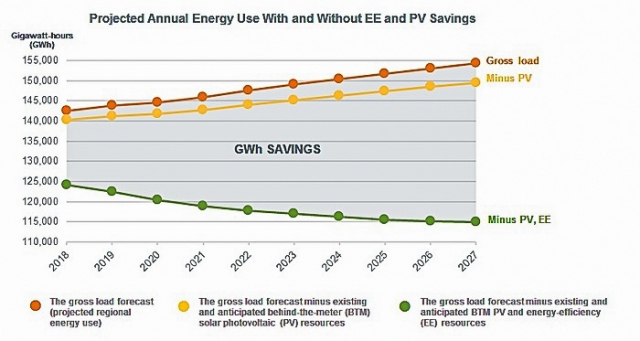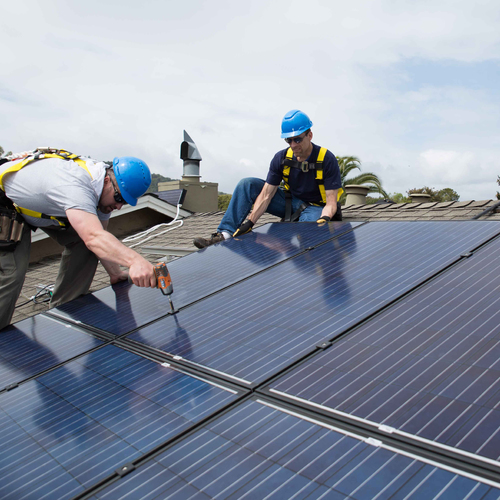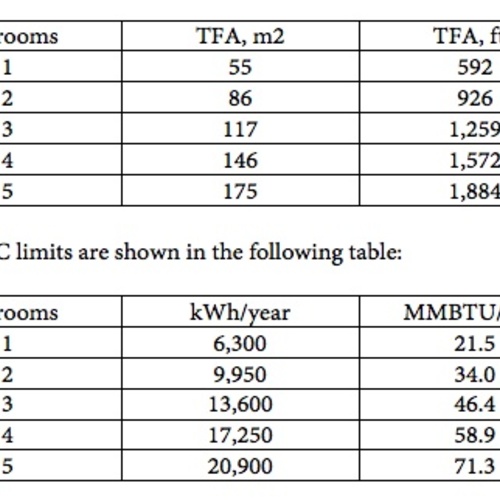
Image Credit: ISO New England
A combination of energy-efficiency measures and behind-the-meter solar will reduce both overall demand for grid electricity and peak demand over the next decade, a new report from the region’s grid manager says.
ISO New England offered its forecast for the 10-year period through 2027, predicting that overall electricity use would drop by 0.9% each year, from 124,252 gigawatt hours this year to 114,980 GWh in 2027. Without either new energy efficiency measures or new solar installations, consumption would climb by 0.9% a year, to a total of 154,364 GWh.
Energy efficiency programs are state-sponsored efforts to reduce the demand for energy in New England, a region that includes Connecticut, Massachusetts, Maine, New Hampshire, Rhode island, and Vermont. The report isn’t specific about what types of energy efficiency programs will be responsible for the trend, but they typically include things like lighting efficiency improvements and other building upgrades upgrades that help consumers save money. Behind-the-meter solar refers to photovoltaic systems on the consumer’s side of the electric meter.
Peak demand goes down, too
Peak demand on the grid is another important metric. When demand for electricity surges and outstrips normal supply — on a very hot summer afternoon or very cold winter evening, for example — the utility is forced to purchase additional power, often at higher prices, or bring idled plants on line. Either approach is expensive. There was good news on this front as well.

Taken separately, energy efficiency is expected to save New England an average of 2,059 GWh a year. Solar is expected to add about 2,162 GWh of electricity each year, going up to 4,783 GWh by 2027.
Under normal summer weather conditions, ISO New England thinks peak demand will fall by 0.4% over the 10-year period. Solar is the biggest contributor to that trend, accounting for an added 633 MW of electricity this year, growing to 1,050 MW in 2027. Peak demand under extreme summer weather should remain about flat, the report says, showing just a 0.2% annual drop.
Winter peak demand is expected to fall 0.7% annually under both normal and extreme conditions.
The report finds wide differences in how PV installations have grown in the New England states. Massachusetts is far and away the regional leader, with 78,047 separate installations installed by the end of 2017 and total capacity of 1,602 MW (AC). Maine, with a chilly regulatory environment and a governor resistant to renewables, had installed capacity of just 33.46 MW and 3,598 installations.
There were a total of 132,408 PV sites in the region at the end of 2017. Almost all of them (97%) had a capacity of less than 25 kW.
Weekly Newsletter
Get building science and energy efficiency advice, plus special offers, in your inbox.















0 Comments
Log in or create an account to post a comment.
Sign up Log in